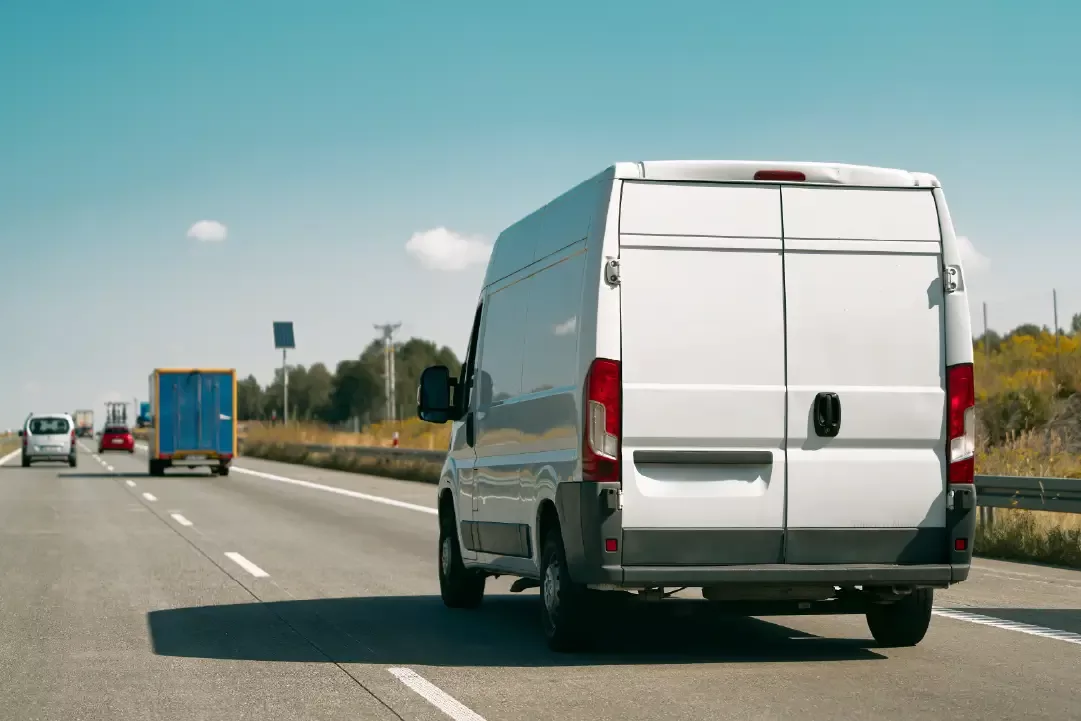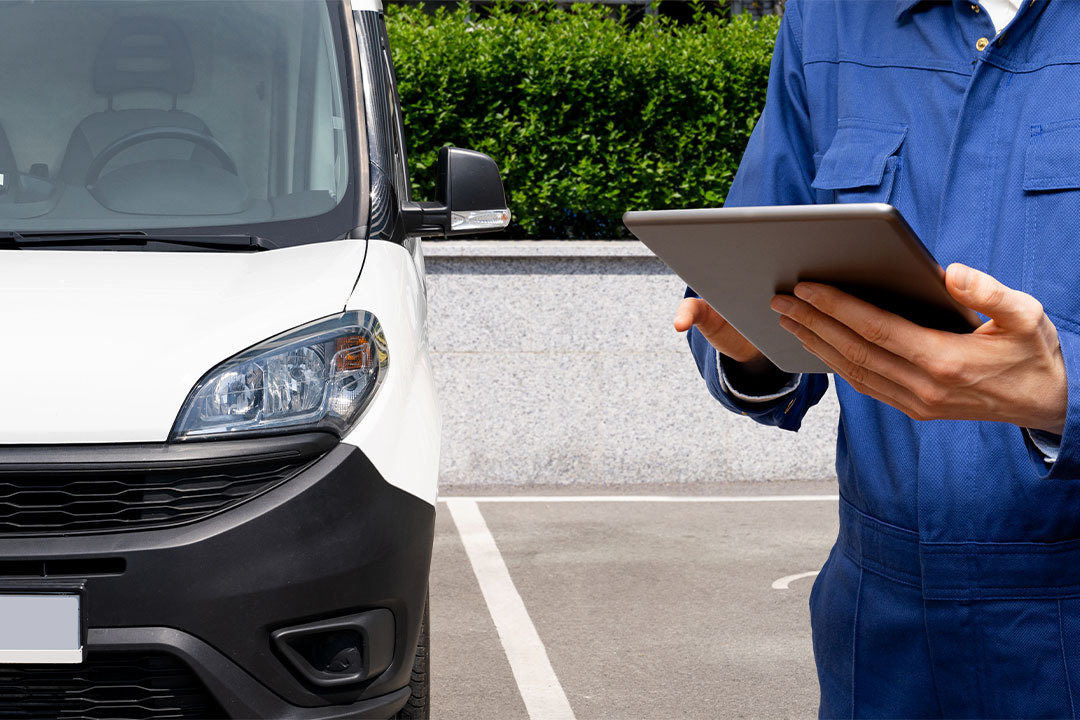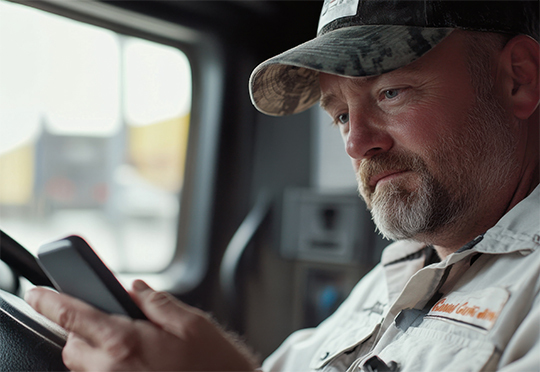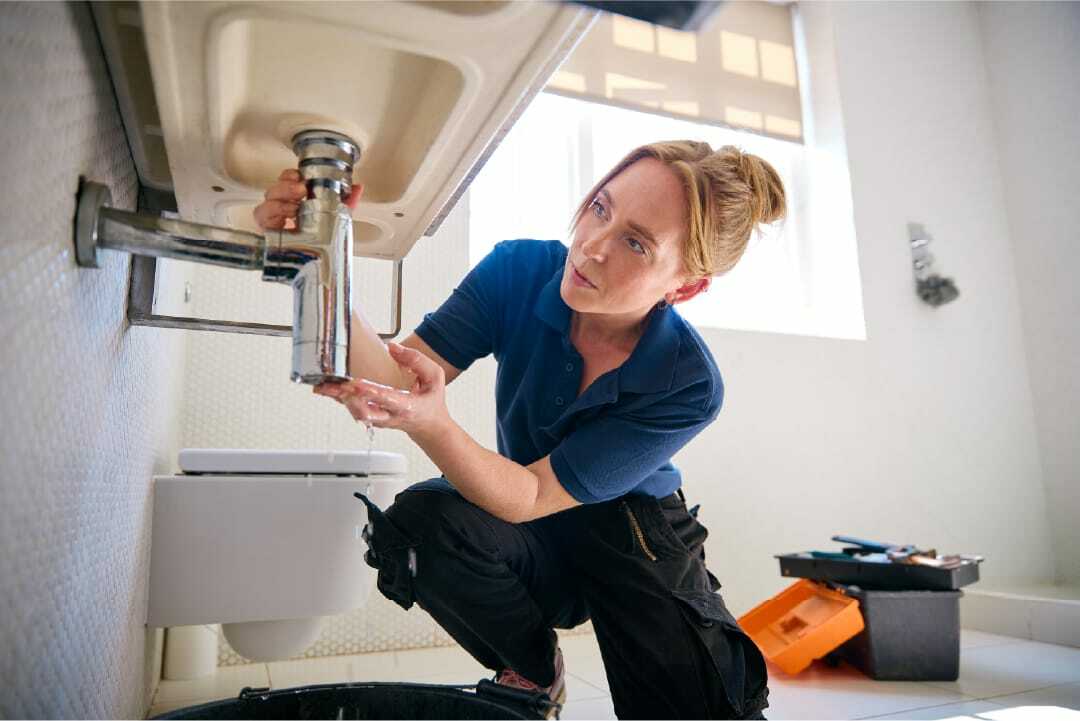
What Are Telematics Systems and How Do They Work?
What is telematics?
Telematics is the use of telecommunications and informatics to remotely collect, transmit, and analyze data from vehicles and other equipment. A telematics system is typically a combination of GPS, vehicle data monitoring diagnostics, and cloud-based telecommunications software that provides real-time insights into vehicle location, performance, and driver behavior. This data can be used to improve fleet management.
Managing a fleet, big or small, comes with its own unique set of challenges. Whether it’s monitoring driver safety or optimizing routes to save on fuel, having the right tools can make all the difference.
This is where telematics systems step in, offering a powerful solution for businesses looking to gain better control and visibility over their vehicles and daily operations. From improving customer satisfaction to cutting operational costs, these systems provide invaluable data that can transform how you manage your fleet. They can even help you understand how to coach a safer, stronger fleet.
We’ll take a look at what telematics really means,, how it works, and how the data can improve your business practices. We also show you what to look for in a telematics solution.
What is a telematics system?
A telematics system combines GPS tracking technology, on-board diagnostics, and wireless communication to gather and transmit real-time vehicle data, creating a user-friendly centralized platform for comprehensive fleet monitoring and management. Simply put, it’s like having a command center in your pocket.
This information gives fleet managers insights to make informed decisions like planning faster routes, identifying unsafe driving behaviors, or staying ahead of costly maintenance issues.
Let’s break down the inner workings of a telematics system and how each piece plays its part.
GPS device
The GPS device is the core of any telematics system. It uses satellite signals to pinpoint a vehicle’s exact location, speed, and direction of travel. This real-time data lets you know where your vehicles are at all times and can even help dispatch more efficiently.
Linxup’s GPS fleet tracking solution is part of a user-friendly telematics system with straightforward installation, with options like a simple plug-and-play setup into the OBD-II port or a quick hardwired connection. It immediately starts giving you real-time GPS tracking and driver behavior insights so you can protect your vehicles and your team.
On-board diagnostics (OBD-II) port connection
The OBD-II port connection gives you a closer look at your vehicle’s health. It gathers vital engine data like RPM, fuel consumption, and fault codes indicating potential mechanical issues. This alerts you when a vehicle needs maintenance before it breaks down.
Many telematics systems also connect to the CAN (Controller Area Network) bus. While the OBD-II port is a standardized access point, the CAN bus is the internal communication network within the vehicle. The CAN bus gives you richer, real-time insights than OBD-II, though both provide valuable vehicle telematics data.
Telecommunications module
The telecommunications module is how a telematics device sends valuable data from a vehicle to the cloud. It transmits the data collected by the GPS device and OBD-II connection so that the information reaches your centralized software platform quickly and reliably.
Staying constantly connected lets you see real-time insights. The telecom module uses cellular networks for most fleets, but satellite connections can also be an option for remote or off-grid locations.
Centralized software platform
Once all the vehicle data is collected, where does it live? This is where the centralized software platform comes in. Here, raw data is transformed into actionable insights via visualization, analysis, reporting, and alerts. See everything in one convenient place: vehicle locations, driving behavior, fuel usage, and more.
A user-friendly interface (usually an app) allows you to easily see key metrics, track trends, and identify areas for improvement. The intuitive design takes complex data and makes it simple so fleet managers can make quick and effective decisions.
Sensors
Beyond the basics, telematics systems can also integrate sensors that monitor specific conditions:
- Temperature sensors: These are useful for refrigerated units or other sensitive cargo.
- Door sensors: Know when cargo doors are opened or closed, helping to confirm if a delivery has been picked up or dropped off.
- Cargo detection sensors: Check for the presence or absence of cargo
- Driver ID fobs: See which driver is in which vehicle for accountability and performance tracking.
These sensors give you extra visibility to protect and monitor the equipment you need to secure to run your business. When combined with dash cams, you can gain more info from video telematics to improve your team’s safety, keep drivers accountable, and uncover untapped efficiencies when managing your fleet.

How do telematics systems work?
Telematics systems work by sending a constant stream of data from multiple vehicles to a central platform. This allows fleet managers to review insights and make informed decisions. The continuous flow of information gives you an inside look into your operations, helping you improve everything from driver behavior to route efficiency. That means you can keep an eye on what’s happening out on the road without ever having to leave your desk.
Telematics fleet management is a must-have tool if you have trucks on the road. Let’s break down how it all works.
1. Data gathering
Before telematics data can help you make improvements, it needs to collect the right data for your business. That stats with a telematics device, a small unit installed in the vehicle. Telematics devices pull data from a mix of sources: GPS for location, vehicle sensors for things like temperature and doors, and OBD-II or CAN bus connections for engine performance. The type of data tracked can range from basic things like speed and mileage to more advanced information like engine diagnostics, harsh braking events, and even fuel levels.
With this data, you’ll have a clear view of how your fleet is performing. Your drivers will also be better prepared for surprises like potholes.
To determine which vehicle tracker is right for your business, reach out to the Linxup team today.
2. Data transmission
Once the data is gathered, the telematics device uses cellular networks (similar to how your smartphone sends and receives data) or satellites (in more remote areas) to transmit information back to your dashboard. This gives you reliable, real-time updates accessible from anywhere with an internet connection without slowing down your devices.
Security matters here, too: Many telematics systems will encrypt and protect sensitive fleet data during transmission.
3. Data analysis
After transmission, all of the collected data is processed and analyzed on the telematics platform. This is where raw numbers transform into meaningful insights.
You can even fine-tune your telematics system with AI event sensitivity settings.

4. Data presentation
Once the data is collected and sent, the telematics system dashboard turns the analyzed data into easy-to-understand visuals with charts, graphs, maps, and automatic alerts. The system is designed with busy fleet managers in mind, so you’ll never have to dig through endless spreadsheets or watch every dash cam video to get valuable insights. You can also schedule automatic reporting and a summary of key performance indicators to help track ongoing issues or trends.
With real-time alerts for critical events like speeding or geofence breaches and automated reporting, you’ll be able to make smart decisions faster. For a closer look at our integrated solutions, explore the Linxup + Whip Around integration.

Benefits and uses for fleet telematics
Telematics systems are game-changers for fleets of all sizes. With the right systems in place, your whole operation can run smoother. This improves safety, reduces costs, and even helps you provide better customer service. From lowering insurance premiums to keeping teams accountable, leveraging telematics can have significant returns. Here are some advantages fleet owners and managers see with telematics systems.
Reliable GPS tracking and mapping
One of the most immediate benefits of telematics is reliable GPS fleet tracking and mapping.
You can also create geofences, or virtual boundaries, for individual vehicles and receive alerts when they enter or exit designated areas. It helps you keep your fleet organized and avoid calling drivers to confirm their location.
Improved driver behavior and safety
Telematics makes it easier to fix risky driving behavior before an accident. With immediate alerts for things like speeding, harsh braking, rapid acceleration, and excessive idling, managers can provide feedback right away. And if there’s ever an accident, documented data is available to help with insurance claims and investigations.
It can even be used to boost team motivation. By providing clear data and driver scorecards, you can recognize and reward safe driving, offer targeted coaching based on real performance, and create opportunities for drivers to improve their skills. This data-driven approach not only leads to safer roads and fewer accidents but also empowers your team by showing them you’re invested in their professional growth and well-being.

Reduced overhead costs
Implementing a telematics system can lead to big reductions in overhead costs. For example, by monitoring fuel efficiency, you can identify and address issues that lead to excessive fuel consumption. Route optimization based on real-time traffic and conditions reduces overall mileage, leading to lower fuel and maintenance expenses. The system also helps reduce unauthorized vehicle use.
Some insurance providers also offer lower premiums for fleets that use telematics.
Better vehicle maintenance scheduling
Proactive maintenance is another major benefit of telematics. The system can provide engine diagnostics and fault code alerts so you’ll know when a vehicle needs work.
By catching issues before they get worse, you can minimize downtime and lower costs. You can also set and schedule maintenance reminders based on actual mileage or engine hours rather than timeframes.
Simplified regulatory compliance tracking
Tired of sorting through piles of paperwork? Telematics systems can help you stay on top of hours of service (HOS) regulations and keep your records straight.
The systems automatically log data that can be used for compliance audits, reducing the administrative burden on you and your team.
Improved customer service and accountability
Last but not least, telematics contributes to better customer service, transparency, and accountability. Accurate ETAs, proof of delivery, and clear records keep your customers happy and minimize disputes.
How to choose the right telematics solution for your fleet
Choosing the right telematics solution for your fleet is a major decision. The right system can significantly impact how your team’s operate, how you manage them, and bottom line. Here’s what to look for to find a solution that meets your current needs and can adapt as your business grows:
- Scalability and flexibility: Can the system grow with your fleet, adding or removing vehicles as needed, without hassle? A good telematics solution should offer flexible plans and features that adapt to an evolving business.
- Ease of use: Is the software intuitive and user-friendly, providing clear reporting and actionable insights without a steep learning curve? Fleet managers need to be able to quickly digest information and make decisions.
- Integration capabilities: Does the telematics solution integrate seamlessly with your existing systems, like your dispatch software, accounting platforms, or CRM? Choose a telematics solution that won’t disrupt your current operations.
- Data security and privacy: Are there strong data security measures and privacy protocols? Due to the sensitive nature of fleet data, it’s critical to protect your information from leaks.
- Support and training: What kind of customer service and training are offered to help you get the most out of the system? Responsive and knowledgeable support is important for addressing any issues that arise. For a busy field service business, this could mean getting immediate help if a new device isn’t reporting location correctly, setting up a new geofence for a recurring job site, troubleshooting why fuel consumption data seems off, or getting a little extra guidance on how to pull a specific report for a customer dispute. With Linxup, you’ll enjoy easily accessible, U.S.-based support that understands the unique needs of your fleet.
Reporting and analytics capabilities: Does the system offer customizable reports and analytics to provide actionable insights? The ability to tailor reports to your specific needs is a major advantage. For instance, pulling a custom report showing driver idle times at job sites can help you spot opportunities to reduce fuel waste, while checking a report on harsh braking events allows you to quickly pinpoint drivers who might benefit from additional safety coaching. These kinds of tailored reports help you quickly find the exact information you need to make smart, impactful business decisions.
Track what matters most with Linxup
Telematics systems aren’t just about tracking dots on a map; they’re about making sure your business runs smarter and safer with proactive management and problem-solving. For small to mid-sized businesses, they can make a big difference by helping you track vehicles, monitor driver behavior, schedule maintenance, and get ahead of problems before they turn into costly headaches.
With Linxup’s simple yet powerful telematics solutions, you’ll get clear and actionable insights. We believe that managing your fleet should be straightforward, allowing you to focus on what you do best: serving your customers and growing your business. Our easy-to-use platform, combined with U.S.-based support and transparent pricing, puts the power in your hands.
Want to see how Linxup can help with reliable and user-friendly telematics solutions? Learn more about GPS fleet tracking for your business and the potential risks of not using GPS tracking tools.



